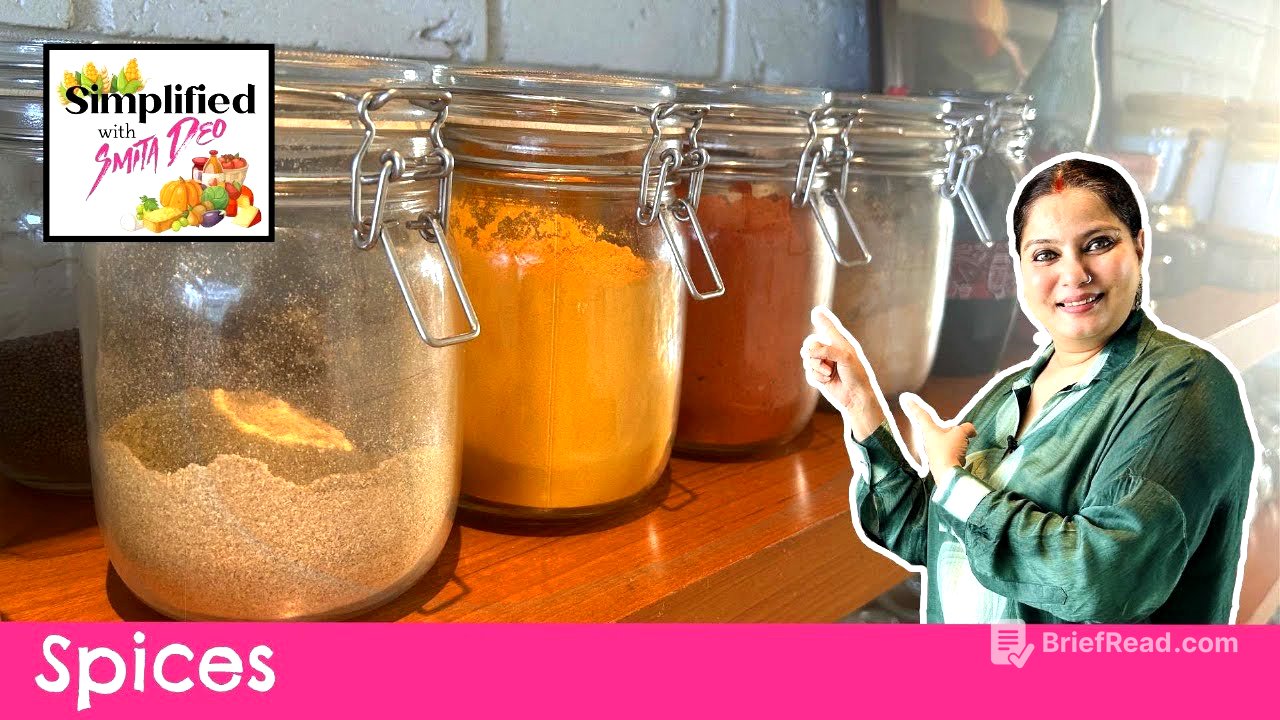TLDR;
Smita Deo shares her collection of spices and discusses the joy of making homemade spice mixes. She walks through a variety of spices, both common and exotic, explaining their uses and benefits in Indian cooking. She also mentions the spice mixes she regularly prepares, such as sambar powder, rasam powder, and various masala blends, and encourages viewers to explore the world of spices.
- Highlights the satisfaction of creating personalized spice blends.
- Showcases a wide array of spices, from everyday to more unique varieties.
- Explains the uses and benefits of specific spices in cooking.
Introduction to Homemade Spice Mixes [0:00]
Smita Deo introduces the topic of spices, revealing that she makes her own spice mixes. She expresses the satisfaction derived from hand-selecting spices and grinding them into fresh powders, enhancing the flavor of home-cooked meals. She emphasizes that while ready-made spice mixes are available, creating your own offers a unique and rewarding culinary experience.
Regularly Used Spices [1:16]
Smita showcases her regularly used spices, including green cardamom, black peppercorns, black cardamom, fennel seeds (soft), and cloves. She transitions to more exotic spices like dagad phool (stone flower), which is now easily accessible online. Other spices mentioned are cinnamon, star anise (especially favored in mutton dishes for its robust flavor), nutmeg, and white peppercorns.
Unique and Aromatic Spices [2:07]
Smita continues with unique spices such as Hing (asafoetida) in rock form, which she plans to powder. She also presents marati mogu, commonly used in Karnataka cuisine, especially in bisi bele bath. Kebab Chini and ajwain seeds (or OVA) are also part of her collection, the latter being used in dishes like panch phoran.
Spices Bought in Larger Quantities [2:47]
Smita discusses buying certain spices in smaller quantities (50-100g) and others, like cumin, in larger amounts (0.5-0.25 kg). She highlights Sichuan pepper (Timur), which adds an amazing flavor to fish curries and aids in reducing flatulence when used in mackerel dishes. Coriander seeds are bought in large quantities to make fresh coriander and byadgi chili powder, essential in Karnataka cuisine.
Specialty Spices and Storage [3:39]
Smita mentions kokum, sourced from her hometown, and bay leaves, which she stores in a large container due to their bulk even in small quantities. She then lists the spice mixes she regularly makes at home, including sambar powder, rasam powder, Frankie Masala, pav bhaji Masala, and tandoori Masala. She distinguishes between the red and white tandoori garam masala, each used for different gravy preparations.
Homemade Spice Mixes and Future Content [4:13]
Smita concludes by mentioning her preparation of early stock of kapuri, kanda, and lasun Masala. She announces that every Wednesday, her content will focus on kitchen-related topics, including equipment, utensils, and spices, encouraging viewers to stay tuned for more videos.









